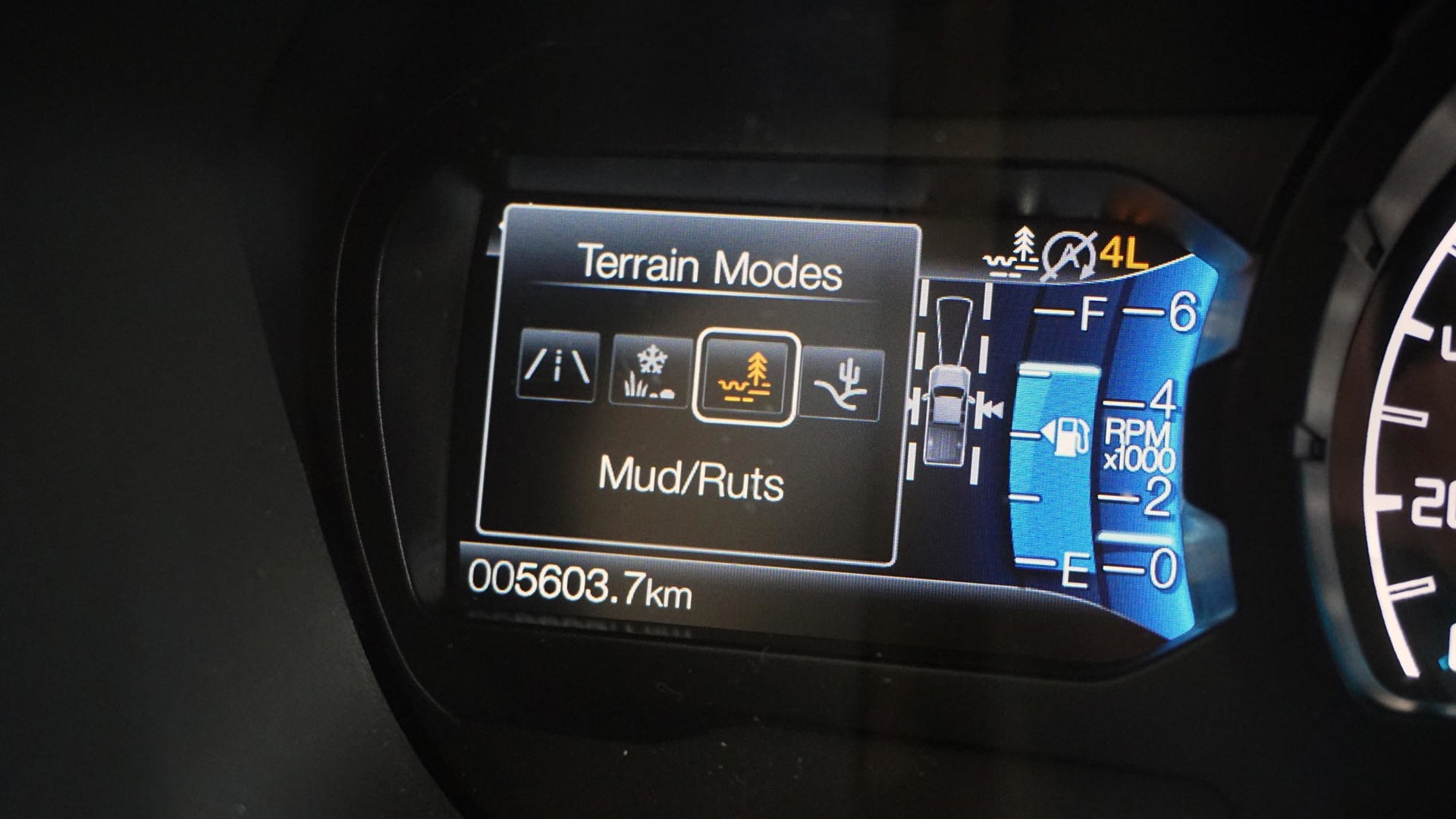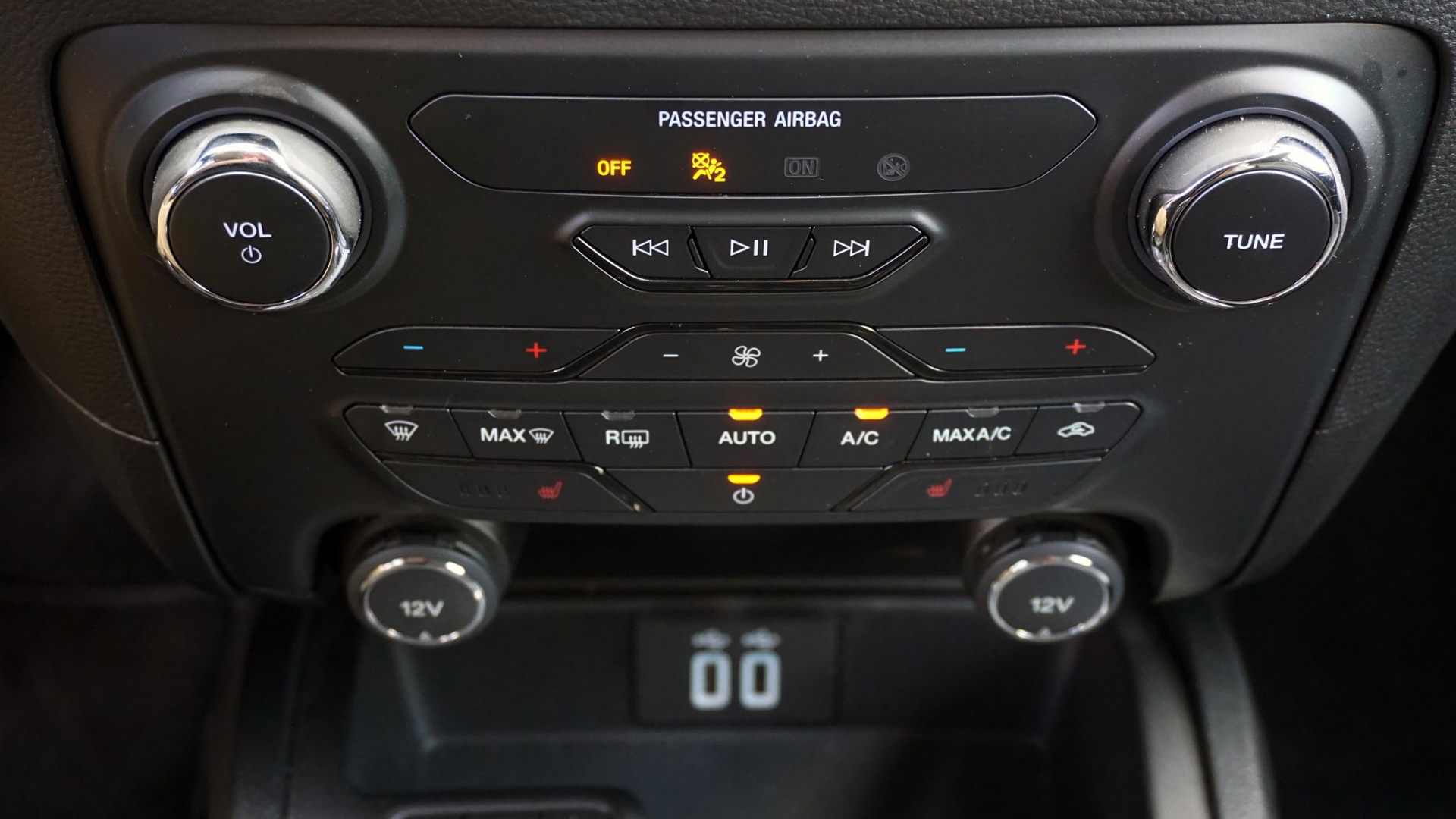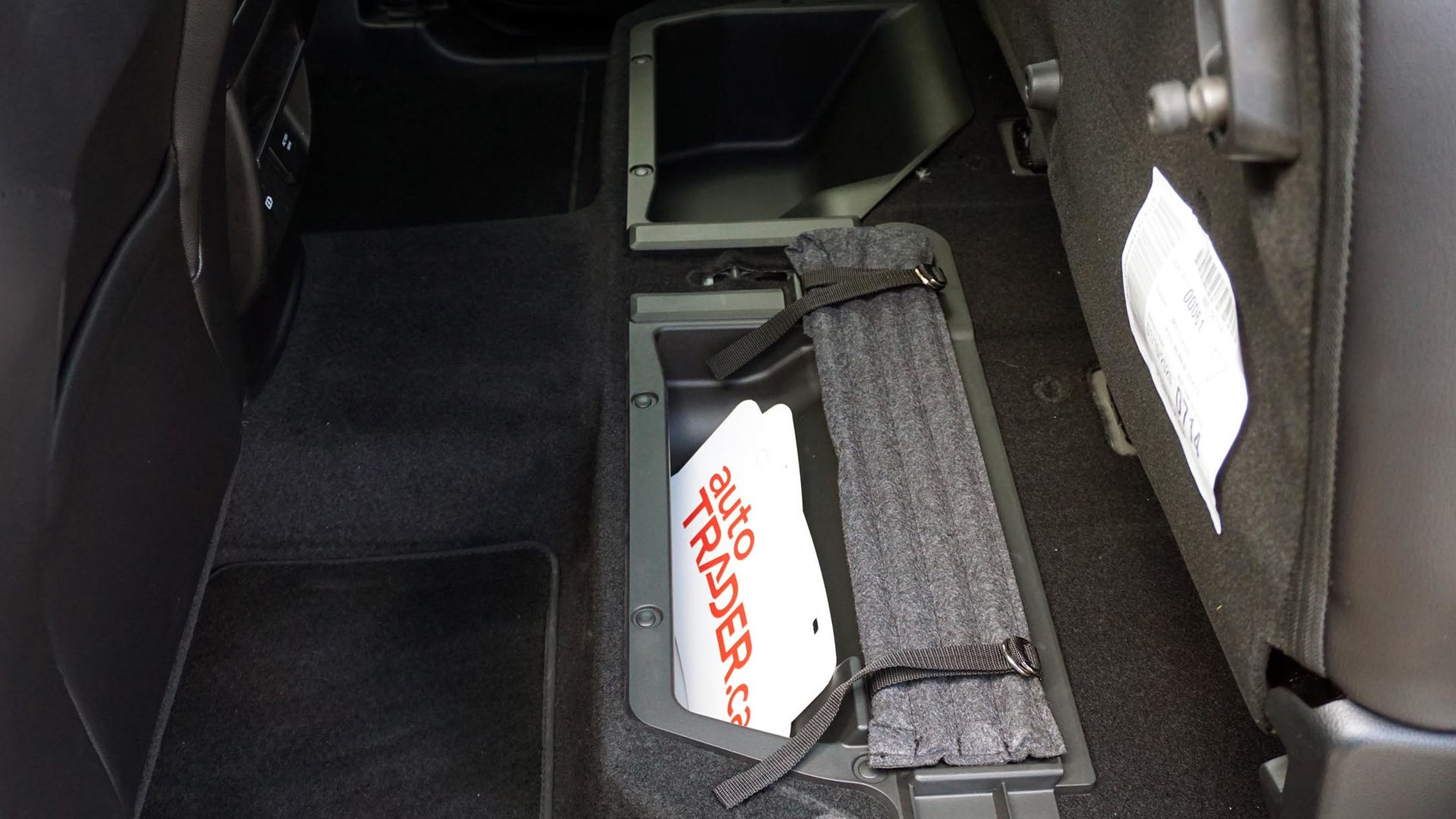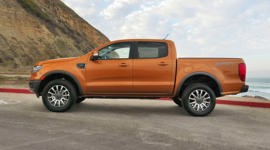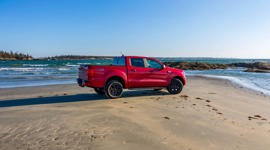 AutoTrader SCORE
AutoTrader SCORE
-
STYLING8/10
-
Safety9/10
-
PRACTICALITY9/10
-
USER-FRIENDLINESS9/10
-
FEATURES9/10
-
POWER8/10
-
COMFORT7/10
-
DRIVING FEEL7/10
-
FUEL ECONOMY8/10
-
VALUE8/10
When it comes to mattresses, we all have our preferences. Some of us like a soft and supple place to slumber, while others – yours truly included – would rather something a little firmer. In a world where midsize trucks are like mattresses, those in favour of the former will find exactly what they’re looking for in the 2020 Ford Ranger – a truck with which I was unable to resolve my differences after a week behind the wheel.
Driving Feel: 7/10
Let me be clear here: there’s nothing disconcerting about the way the Ranger drives, but it’s certainly different. If there’s a more softly sprung vehicle out there, I can’t name it. In fact, not since a friend lifted his Jeep Wrangler with Ford Crown Victoria springs have I experienced anything quite like this Ranger.
Forget the mattress analogy – this thing’s like a 16-ft sailboat in a storm surge the way it lists and rolls. Shift in your seat and the Ranger rocks side-to-side like it’s riding on nothing but its steel springs. Outside the truck, all it takes is a gentle push and pull of the bedside to get the suspension to sway in the same manner, and it isn’t difficult to replicate the sensation on the road either, with rolling pavement causing the cabin to careen back and forth in a way that’s unlike anything else on the market.
Adding to the pickup’s peculiarity is the jarring stiffness that emerges on rough stretches of road. It’s almost as if the damping gets overwhelmed to the point that it begins to shudder as every crack and crevice pulses through the suspension components. That’s in addition to the kind of rigidity common in body-on-frame trucks – the same kind found in both the Chevrolet Colorado and the Jeep Gladiator.
The brakes land on the squishy end of the spectrum, requiring deep dives into the pedal before they start to slow the truck down. You’ll feel every one of the Ranger’s roughly 2,000 kg (4,409 lb) as the nose dives before the truck comes to a halt. The steering, meanwhile, is perfect for a pickup like this, feeling nimble and light at low speeds – great for aligning with a trailer or negotiating a trail – before firming up in a reassuring way.
Power: 8/10
Ford’s kept it simple when it comes to the Ranger’s drivetrain: there’s only one offered. Every example sold in Canada comes fitted with part-time four-wheel drive and a turbocharged four-cylinder engine mated to a 10-speed automatic transmission. The oily bits aren’t exactly perfect – plus, I’d probably want a V6 option if I planned to tow with any frequency – but they’re mostly free of issue in everyday driving.
The 2.3L engine is the same one offered in the base Ford Mustang, but output’s been dialled back to a still healthy 270 hp and 310 lb-ft of torque. Unlike the broad torque plateau common to turbocharged motors, the 2.3L’s rises in a similar fashion to a naturally aspirated engine before gradually tapering off after its 3,000 rpm peak. It’s not exactly eager, but there’s enough output to inspire confidence in most scenarios.
If there was any fault in the mechanical equation it would lie with the transmission, with the occasional clunky gear change and a failure at times for it to respond to requests for extra passing momentum. Upshifts and downshifts low in the count – mainly between first and second, and second and third – are sometimes met with a dull thud as the 10-speed does its work; it never impedes forward momentum, but it’s certainly noticeable and not exactly pleasant.
Then there’s the propensity for the transmission to leave the truck flat-footed at the most inopportune times. Reach deep into the throttle pedal and more often than not it’s met with a sleepy resistance – frustrating when pulling out to pass on a single-lane highway. The 10-speed is far more responsive when the gear selector is dropped into sport mode, holding gears for long enough to tap into the meatiest part of the rev range.
Fuel Economy: 8/10
Assuming it’s not left in sport mode – and the higher engine speeds that accompany it – the Ranger is capable of returning reasonable fuel consumption for a midsize truck. Officially rated at a combined 10.9 L/100 km, I was able to do slightly better (10.7 L/100 km) over the course of nearly 900 km of testing. While the majority of that mileage was racked up on the highway, I also spent an afternoon off-roading, an activity that’s no friend of fuel economy.
User Friendliness: 9/10
I have a sneaking suspicion that few Rangers will spend much time traversing trails – even ones equipped with the FX4 package like the truck I tested. It does, however, serve up a healthy dose of turn-key capability.
Since every Ranger sold in Canada comes with a selectable four-wheel drive system, the optional FX4 package adds all kinds of goodies to put it to best use: specially tuned shocks at all four corners; an electronic locking rear differential; a bunch of skid plates underneath to protect vulnerable components like the transfer case and gas tank; and some electronic trickery to tailor the traction control system to various off-road conditions.
Should you have plans for the occasional four-wheeling foray, the Ranger is a competent companion. But more than that, it’s easy to transition from the road to the rough stuff – and back again – behind the wheel. Spin the console-mounted dial to engage four-wheel drive (high or low, depending on conditions), and tap the button in the middle to cycle through the different terrain settings: snow, mud, or sand. Just ahead of that dial are the buttons for the locking rear differential and the crawl control system – another item included in the FX4 package.
No matter which aids you choose to utilize, the Ranger feels right at home crawling over rocks and splashing through mud. While the tires could be better – it doesn’t take long for their tight tread patterns to be packed with mud – the 225 mm (8.9 in) of ground clearance helps the right-sized Ranger hurdle most obstacles with ease. There are, however, some hair-raising moments caused by what can’t easily be seen from inside. The shock mounts on the rear axle are prone to contact with whichever rut the Ranger’s crawling out of, while the broad sides of the truck make it difficult to keep an eye on the optional running boards that hang a little low.
Otherwise, the Ranger has excellent sightlines in all directions, while the driver’s seat provides a comfortable perch from which to pilot the truck no matter the terrain. And just like those off-road controls, most of the rest of the switchgear falls readily to hand from either front seat. While the HVAC system employs buttons rather than dials to adjust the temperature and fan speed, which can be tough to spot at a glance, corresponding controls can be called up on the dash-mounted infotainment display.
The eight-inch touchscreen that comes in all but base trucks runs a fairly straightforward infotainment system, though it can at times be slow to respond to inputs, while the standard Apple CarPlay refused to connect on a few occasions during testing.
Features: 9/10
Since the truck I tested was the loaded Lariat model, it was as decked out as anyone could want their midsize truck to be. No, the opulence offered in larger pickups like the F-150 hasn’t yet trickled down here, but that means the Ranger still feels like a truck instead of a luxury vehicle.
There’s leather upholstery, heated front seats, a whole host of USB ports, and a dual-zone automatic climate control system. There’s also adaptive cruise control – the Ranger is one of only two midsize trucks to offer adaptive cruise – and lane-keep assist, the latter of which works well, gently nudging the truck away from lane markings instead of ping-ponging it to the opposing painted lines. There’s also a Wi-Fi hotspot, LED lights, and rain-sensing wipers.
Safety: 9/10
Ford has also filled the Ranger with all sorts of advanced safety features. Besides being one of the very few to offer adaptive cruise control, it’s the only truck like it to offer that in addition to lane-keep assist, automatic emergency braking with pedestrian detection, and blind-spot monitoring. The blind-spot system, which also watches for rear cross traffic, can be set to cover trailers, too; simply access the system through the digital display in the gauge cluster, program the trailer length (it can store up to four trailer profiles), and the sensor range extends to watch whatever is attached to the hitch.
Practicality: 9/10
Towing capacity is officially listed at 3,401 kg (7,498 lb) – a lot of weight to be pulling behind a midsize truck. While I would feel more comfortable with about 2,269 kg (5,000 lb) strapped to the back, the crew cab model’s 707-kg (1,559-lb) payload is reasonable for a pickup this size. (Bear in mind, payload doesn’t cover just what’s in the bed; that includes the people in the cabin, too.) While I didn’t haul anything close to that heavy during testing, everything from an unbuilt shed to an industrial sewing machine fit within the Ranger’s high bedsides. The cabin is equally as accommodating, with enough room for four adults in the crew cab I tested, and enough cubbies to stash smaller items.
Comfort: 7/10
Compared to other entries in the class, the Ranger’s interior confines are as generous as they are enjoyable. Where the Chevy Colorado – and its fraternal twin, the GMC Canyon – feel far more narrow inside, the Ranger’s space reminds me of the 2002 Ford F-150 I once owned: more than enough width to avoid feeling like you’re sitting too close to the person in the passenger seat. Likewise, where the Toyota Tacoma feels a little claustrophobic, the Ranger boasts plenty of headroom. The seats themselves are comfy and supportive, too, with no complaints after hours of driving.
Styling: 8/10
The Ranger boasts an understated look, though the blackout package added to my tester provides some character – although it’s a bit pricey at $2,495. Either way, to my eyes it’s a sharp-looking truck, with a distinctly Australian vibe (after all, it was designed and built by Ford’s Australian division almost a decade ago). The rear end in particular accentuates the truck’s ground clearance, with massive gaps between the tires and wheel arches, while the front end wouldn’t look out of place on one of that country’s popular utes.
Value: 8/10
Too often when I’m testing a midsize truck, questions about their cost are often met with a retort along the lines of, “I could buy an F-150 for that kind of money.” And it’s true – but completely besides the point. Because sure, it’s more than possible to find a similarly equipped F-150 for the $42,619 starting price of the loaded Ranger I drove. But where the F-150 is bloated and wholly unnecessary for the vast majority of shoppers, the midsize Ranger is pretty much the perfect size.
The asking price of my tester ballooned to $52,639 before tax thanks to more than $8,000 in optional equipment – most of which I could live without. The $3,000 package that includes those rain-sensing wipers, an upgraded stereo, and remote start, as well as the blackout package that adds another $2,495 to the price tag would be easy items for me to ditch; the $1,400 FX4 package and the $600 it takes to add towing equipment to this Lariat would require a little more consideration. Either way, some incentives would go a long way toward softening the blow here, though the price is still competitive with trucks like the Colorado and Tacoma.
The Verdict
I was really looking forward to driving the Ford Ranger, and there’s a lot I like about it. It’s easy to manoeuvre, good on gas, and impressively capable in off-road situations. It’s also hard to argue with the advanced safety features Ford offers with it, and the cabin is excellent – especially in loaded Lariat guise. It’s only the suspension I’m still hung up on after a week of quality time together. I like so much about the truck, but it might be just a bit too springy for my taste. My best advice is to drive it back-to-back with competitors like the Tacoma and Colorado to see what you like best.
| Engine Displacement | 2.3L |
|---|---|
| Engine Cylinders | Turbo I4 |
| Peak Horsepower | 270 hp @ 5,500 rpm |
| Peak Torque | 310 lb-ft @ 3,000 rpm |
| Fuel Economy | 11.8 / 9.8 / 10.9 L/100 km cty/hwy/cmb |
| Cargo Space | 1,225 L |
| Model Tested | 2020 Ford Ranger Lariat Crew Cab 4WD |
| Base Price | $42,619 |
| A/C Tax | $100 |
| Destination Fee | $1,900 |
| Price as Tested | $52,639 |
|
Optional Equipment
$8,020 – Technology Package, $3,000; Black Appearance Package, $2,495; FX4 Off-Road Package, $1,400; Trailer Tow Package, $600; Floor Liner, $250; Mud Flaps, $150; Keyless Entry Pad, $125)
|
|



















